Content
- Views
- With the flow
- Due to development
- By localization
- By the nature of the inflammation
- Catarrhal form
- Purulent form
- Stages and degrees
- Symptoms and Signs
- Causes
- Diagnostics
- Treatment methods
- Drug treatment
- Non-drug treatment
- Puncture and probing of the paranasal sinuses
- Drainage method
- Irrigation therapy
- Surgery
- Physiotherapy
- Traditional methods
- Potential consequences and complications
- Video about rhinosinusitis
Acute rhinosinusitis Is the most common upper respiratory tract disease in adults. Most often, it develops against the background of ARVI. Under the influence of viruses, inflammation of the nasal mucosa occurs, which spreads to the paranasal sinuses. Mucus stagnates in the sinuses, which prevents oxygen from reaching the sinuses. As a result, local immunity decreases, pathogens begin to multiply. Treatment should be started as early as possible, as the infection can spread into the cranial cavity, causing severe complications.
Views
The disease has several types, depending on the course, causes of development, localization of the pathological process and its activity. Each of the forms can be one-sided or two-sided.
With the flow
Depending on the course, the disease can be:
- sharp. Full recovery occurs in about 4 weeks;
- recurrent acute. It is characterized by periods of exacerbation (about 2 episodes every six months) and remission, which lasts about 8 weeks.
Without proper treatment, the disease becomes chronic, in which the patient suffers from unpleasant manifestations for a long time.
Due to development
Depending on the cause of the occurrence, pathology is:
- viral;
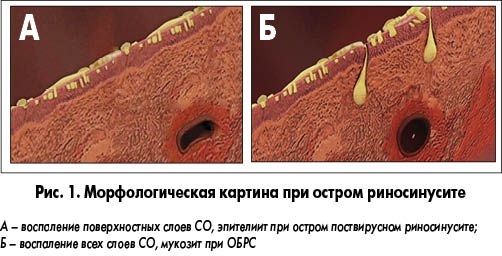
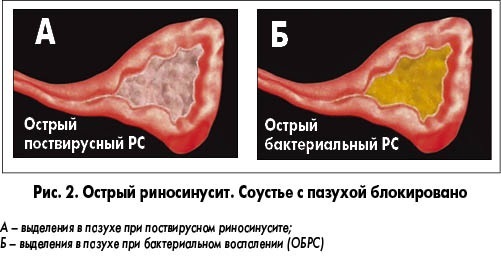
- bacterial;
- fungal;
- mixed;
- traumatic;
- allergic.
By localization
Acute rhinosinusitis in adults, depending on the location, can be:
- maxillary (sinusitis) - inflammation occurs in the sinuses of the upper jaw;
- frontal, or frontal (frontal) - the pathological process develops in the frontal sinus;
- ethmoidal (ethmoiditis) - the structures of the lattice labyrinth become inflamed;
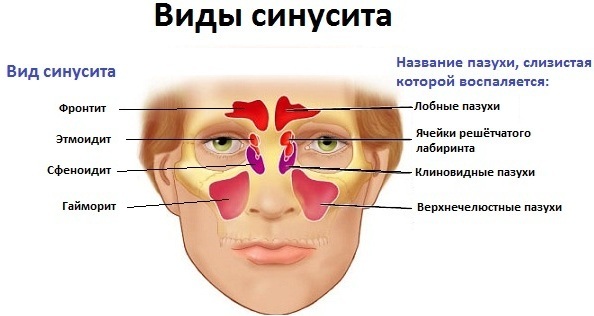
- sphenoidal (sphenoiditis) - the sinus of the sphenoid bone becomes inflamed.
By the nature of the inflammation
Depending on the activity of the inflammatory process, rhinosinusitis is:
- catarrhal;
- purulent;
- mixed.
Catarrhal form
This is the mildest form of the disease. It develops against the background of a viral infection, is characterized by the presence of abundant discharge and swelling of the sinuses. With proper treatment, such signs are eliminated quickly enough.
Purulent form
The development of this form of pathology is facilitated by bacteria (streptococcus, staphylococcus and others). Symptoms are pronounced, the patient suffers from purulent discharge, intoxication, fever, pain.
This is the most dangerous form of the disease, which threatens the development of severe complications such as abscess, meningitis.
Stages and degrees
Acute rhinosinusitis in adults can take several forms:
-
easy. Differs in moderately severe symptoms, low temperature. The patient feels well;

- moderate. The patient's general state of health worsens, the temperature exceeds 37.5oC, pain appears on palpation of the sinuses, headaches occur;
- heavy. It is characterized by severe pain on palpation of the sinuses, edema, headaches, a feeling of weakness, fever (more than 38oWITH).
Symptoms and Signs
Acute rhinosinusitis in adults is manifested by:
- congestion, nasal discharge;
- pain in the sinuses;
- swelling in the face area;
- decreased sense of smell;
- general weakness;
- high temperature;
- headaches;
- bad breath;
- cough from mucus running down the back of the larynx.

Specific signs depending on the affected area:
- frontal sinusitis - pain in the forehead;
- sinusitis - pain in the area of the affected sinuses;
- sphenoiditis - intense headaches;
- etmoedite - nasal.
Causes
Rhinosinusitis can be viral or bacterial. The first form is most common, and various viruses contribute to its occurrence. The mucous membrane of the nasal cavity is covered with ciliated epithelium, which retains pathogenic microorganisms that penetrate inside when air is inhaled. In a healthy person, mucus is quickly excreted along with viruses and bacteria. With various disorders that prevent the renewal of the mucous membrane, pathogenic microorganisms penetrate into the epithelial cells. This contributes to the development of inflammation, the appearance of nasal discharge.
The provoking factors are:
- long-term rhinitis;
- hypothermia;
- allergic reactions;
- taking certain medications;
- ingress of foreign bodies into the nasal cavity;
- curvature of the nasal septum, nasal injury;
- the presence of polyps or adenoids;
- dental diseases.
In adults, the bacterial form of the disease develops if the treatment of acute rhinosinusitis was incorrect. Prolonged nasal congestion or a persistent decrease in immunity can also provoke the disease. The causative agent of the disease is streptococcus, staphylococcus and other bacteria.
Diagnostics
In order to make a diagnosis, the specialist will conduct an examination, analyze the patient's complaints, specifying:
- Does nasal congestion bother you?
- what kind of discharge are present;
- is there any pain;
- whether the body temperature is elevated;
- whether the person has recently had a cold.
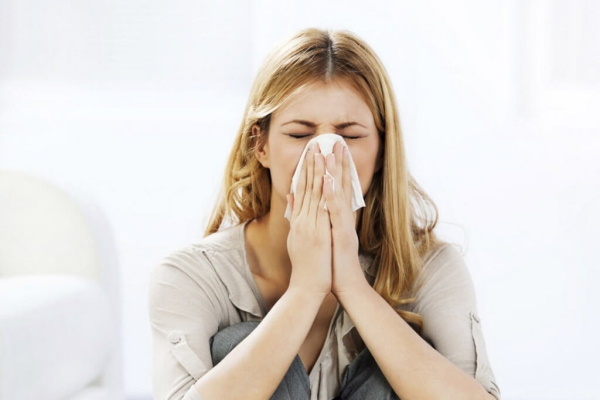
During the examination, the doctor feels the cheeks and forehead, checking for soreness. Edema found on the face can be a sign of a severe course of the disease, which requires hospitalization. Rhinoscopy is also done, during which redness of the mucous membrane, its edema, the presence of mucous or purulent discharge (from 1700 rubles) are detected. For a more detailed examination of some areas, an endoscopy is recommended (from 1,500 rubles).
To understand whether the process has spread to the maxillary and frontal sinuses, an X-ray examination is performed (from 1900 rubles). If there is a darkening in the picture, its appearance is assessed, which makes it possible to distinguish a purulent form from a catarrhal form. Alternatively, an ultrasound scan may be ordered.
To clarify the diagnosis, a puncture of the maxillary sinus is sometimes done using a special thin needle (from 1500 rubles). When removing purulent contents, the cavity is washed and a medication is injected.
Treatment methods
The main tasks in the treatment of the disease:
- reduce its duration;
- prevent the development of complications.
Depending on the patient's condition, the stage of the disease, the method of therapy is selected.
Drug treatment
The main method of treating an acute disease is the use of antibiotics. However, they are used only for moderate to severe cases. The main criteria for the appointment of such funds are the patient's complaints, purulent nasal discharge.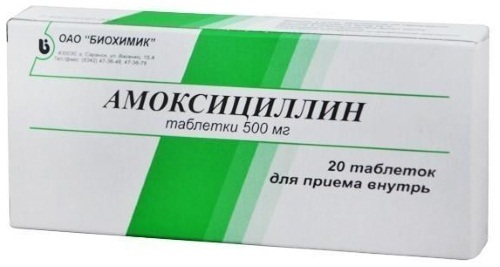
The drug of first choice for the disease is Amoxicillin.
If there is no noticeable clinical effect after 3 days of therapy, drugs from other groups are prescribed:
- cephalosporins;
- macrolides;
- fluoroquinolones.
Antibacterial agents for rhinosinusitis:
| Group | Name | Mode of application | Duration of treatment |
| Penicillins | Amoxicillin | 500 mg 3 times a day | 5-10 days |
| Cephalosporins | Ceftriaxone | 1-2 g intramuscularly once | Individually |
| Macrolides | Azithromycin | 500 mg once a day | 3 days |
| Fluoroquinolones | Levofloxacin | 500 mg once a day | No more than 14 days |
Additionally, nonsteroidal anti-inflammatory drugs (Nurofen, Ibufen) are prescribed. To eliminate mucosal edema, improve mucus outflow, facilitate nasal breathing, it is recommended to use vasoconstrictor drops and sprays (Nazol, Otrivin, Tizin).
It is impossible to use such funds for more than 10 days, as this can lead to the development of drug-induced rhinitis, which is accompanied by severe swelling of the nasal cavity. It is better to select the drug in the form of a metered aerosol, since it is difficult to dispense funds in the form of drops. If the disease is of an allergic origin, antihistamines are prescribed.
Acute rhinosinusitis in adults in particularly complex and refractory forms requires the use of drops with glucorticosteroids - hormones that have anti-inflammatory properties (Nasonex, Nasobek). Such remedies help to get rid of swelling and inflammation. Since medications can contribute to the development of side effects, a specialist should select them.
Mucolytics are needed to liquefy the contents of the sinuses. Herbal preparations are effective, which have not only mucolytic, but also anti-inflammatory effects. The most famous representative of this group is Sinupret.
Thanks to gentian root, verbena herb, sorrel, primrose and elderberry, the composition of the product reduces mucosal edema, improves mucus excretion. Also, the drug contains components that have immunostimulating and antiviral properties. The use of the drug as part of complex therapy accelerates recovery.
Non-drug treatment
Non-drug methods also help to improve the patient's condition.
Puncture and probing of the paranasal sinuses
Such methods are used for flushing the sinuses with antiseptics, removing pathological secretions and administering drugs. Most often, a puncture of the maxillary sinus is performed. The procedure must be strictly justified, it is performed only in the presence of purulent contents.
Procedure:
- The mucous membrane is treated with a solution of lidocaine, then a puncture of the maxillary sinus is made using a special needle and the contents are removed.
- The cavity is washed with an isotonic or disinfectant solution.
- If necessary, medications are administered.
The advantage of this method is the rapid removal of purulent contents, which helps to reduce pain, improve the general condition. The downside is that the procedure must be carried out repeatedly until the sinus is completely cleared. In addition, for many patients, this method of therapy is associated with psychological stress.
Drainage method
To avoid repeated punctures, sometimes a thin rubber tube is placed at the puncture site. This contributes to the creation of an additional path for the release of mucus from the affected cavity, an increase in air exchange.
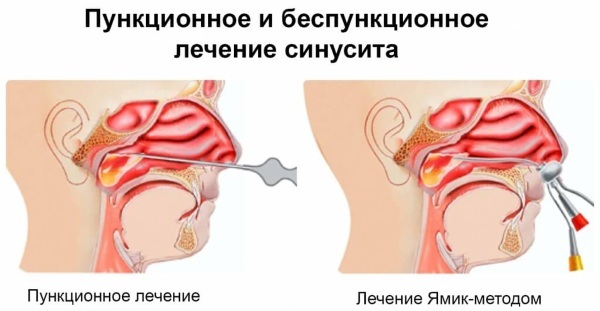
However, this method is not recommended for the primary uncomplicated form of the disease. In addition, a catheter is a foreign body in the sinus that can lead to infection.
Irrigation therapy
For rinsing the nose, seawater-based preparations are used, which can be purchased at the pharmacy (AquaLor, Physiomer, Marimer). Isotonic solution improves the rheological properties of mucus, facilitates nasal breathing. Since there are no components in the composition of such drugs that can provoke the appearance of side effects, strict dosage is not needed. Medicines can be used as needed.
In a medical institution, the nose is washed by the method of moving medications ("cuckoo"). In this case, a solution is poured into one nostril, and the contents of the other are removed using suction. The procedure is not as effective as a puncture, but it is painless and non-invasive.
Surgery
Modern surgeons perform an operation using an endoscope, a thin, flexible fiber-optic device. The device allows you to examine the nasal cavity, expand the diameter of the opening. Using the device, you can remove cysts, polyps, and other neoplasms. The patient experiences moderate discomfort; after the operation, he may feel a slight nasal congestion due to slight swelling. There is no need for hospitalization after the intervention.
Physiotherapy
Physiotherapy treatment is prescribed in the recovery period.
It contributes to:
- elimination of inflammation;
- improvement of microcirculation and activation of metabolic processes in tissues;
- reduction of intoxication;
- restoration of immune functions.
To relieve inflammation, use:
- Low-intensity UHF therapy;

- high-intensity centimeter wave therapy;
- laser therapy;
- ultrasound therapy.
To reduce the concentration of bacteria it is recommended to carry out:
- electrophoresis of antibiotics;
- KUV-irradiation of the mucous membrane;
- darsonvalization.
Immunity is increased by:
- laser blood irradiation (7-10 procedures daily or every other day);
- thalassotherapy (15 procedures);
- air baths (10-20 procedures).
To provide a calming effect, to normalize the state of the patient's nervous system, carry out:
- franklinization (10-12 sessions, 1 per day);
- galvanization of the brain (course - 5-10 daily procedures);
- electrophoresis of sedatives.
It is contraindicated to use physiotherapeutic methods for:
- purulent sinusitis with obstructed outflow of secretions;
- the presence of cysts of the paranasal sinuses;
- benign neoplasms.
Traditional methods
Any folk remedies can be used only with the permission of a doctor and in combination with traditional methods.
With a protracted course of the disease, inhalations with the use of anti-inflammatory herbs are effective:
- chamomile;
- sage;
- calendula.
The procedure helps to free the sinuses from the purulent contents. Tampons are impregnated with infusions of these plants and put into the nose.
Kalanchoe juice, which has antibacterial properties, is also used to relieve inflammation. To prepare the drops, you will need the lower leaves of the plant. They should be crushed, squeezed out and filtered. Mixing juice with water in equal proportions, instill liquid into each nostril 4 times a day, 2 drops. You can use a mixture of beet juice and honey (3: 1). The tool is instilled into the nose 5 times a day, 3 drops in each nostril.
Also used for treatment:
- decoction of chamomile with celandine juice. The ingredients are mixed in equal proportions, 3 drops are instilled into each nasal passage. The procedure is carried out 5 times a day;
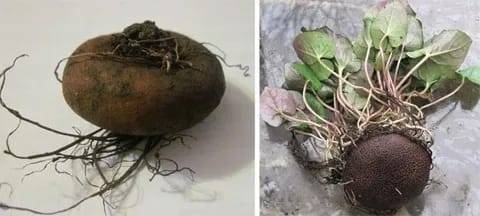
Acute rhinosinusitis in adults with sinus filling is treated with cyclamen root - cyclamen juice. It is used to cleanse the sinuses. 2 drops should be instilled into each nasal passage;
- olive oil with propolis. You will need 100 ml of oil in which you need to dissolve a piece of propolis. The resulting product is dripped into the nose 2 times a day;
- you can relieve inflammation and get rid of painful sensations with the help of honey. It is recommended to instill 2 drops in each nasal passage;
- iodine and potassium permanganate solution. 3 drops of each agent are added to 1 tbsp. water. The solution is used to wash the nasal cavity;
- mummy solution (2%). Can be used as regular nasal drops. Also, the solution is used internally. The treatment lasts 10-12 days;
- green tea with mint and cinnamon. The drink is consumed internally. It helps relieve headaches that often occur with illness. Also, the headache is eliminated by the field clover. Dry raw materials (1 tbsp. l.) pour 250 ml of boiling water, insist 25 minutes. and use 0.5 tbsp. three times a day.
Warming up helps to get rid of unpleasant sensations. Heated salt, hard-boiled hot egg, honey are used as a warming compress.
Potential consequences and complications
Untimely and inadequate treatment can cause:
- the transition of the disease to a chronic form;
- spread of inflammation to other tissues;
- development of bronchitis, pneumonia, otitis media;
- complications from the organs of vision (purulent inflammation of the eye sockets, loss of vision);
- intracranial complications: brain abscess, meningitis, encephalitis;
- sepsis - the spread of infection through the bloodstream throughout the body.
Acute rhinosinusitis is a widespread pathology, and the incidence among adults is constantly increasing. The reason is the weakening of human immunity, the development of global resistance to antibacterial drugs, the uncontrolled use of vasoconstrictor drugs. The disease is dangerous in its consequences, therefore it is important to deal with its treatment in a timely manner and not forget about prevention. To reduce the risk of developing pathology, it is recommended to lead a healthy lifestyle, avoid hypothermia, play sports, treat acute respiratory viral infections in a timely manner and be regularly examined by a dentist.
Video about rhinosinusitis
Rhinosinusitis. What is the danger of the disease:



